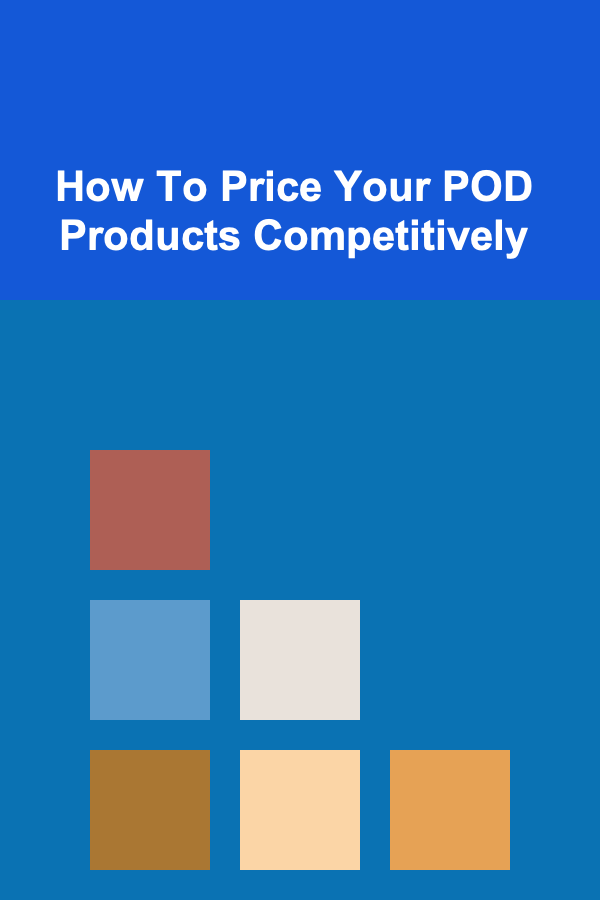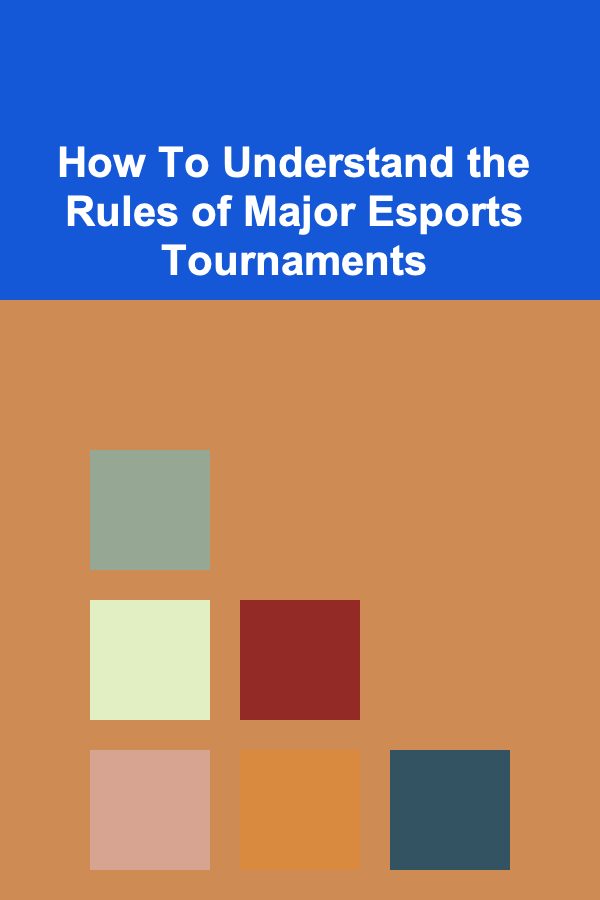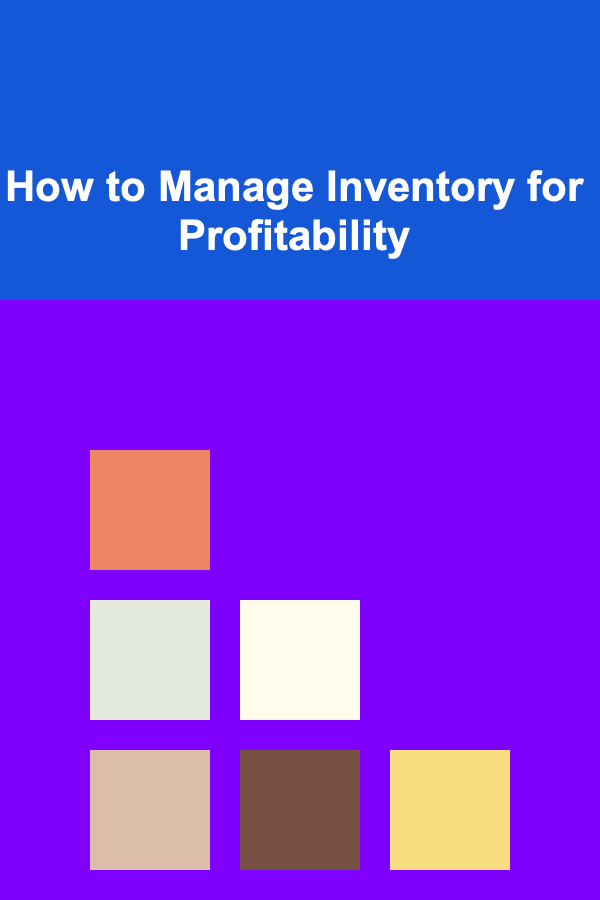
How To Price Your POD Products Competitively
ebook include PDF & Audio bundle (Micro Guide)
$12.99$6.99
Limited Time Offer! Order within the next:

Pricing is one of the most critical aspects of running a successful Print on Demand (POD) business. Get it right, and your products could fly off the shelves. Get it wrong, and you might find yourself struggling with low sales and slim profit margins. So, how do you price your POD products competitively? This article will explore the intricacies of pricing in the POD market, offering strategies to ensure that your products are attractive to customers while still profitable for you.
Understanding the Basics of Print on Demand Pricing
Before diving into the competitive aspects of POD pricing, it's important to understand the fundamental components of pricing POD products.
Cost of Goods Sold (COGS)
The first and most obvious factor to consider is the cost of goods sold, or COGS. This is the amount you pay to have the product printed and fulfilled by your POD provider. COGS will vary depending on several factors:
- Product Type: Apparel, accessories, mugs, posters, etc., all come with different costs.
- Printing Method: Screen printing, DTG (Direct to Garment), sublimation, or embroidery might each carry different price points.
- POD Provider: Each provider has different pricing structures, so finding one that offers competitive prices is key.
- Shipping Costs: Shipping can make a big difference in your final product cost, so understanding how shipping is charged is essential.
Your Desired Profit Margin
Your profit margin is the amount you wish to earn on top of the COGS. Typically, POD businesses aim for a 20% to 50% profit margin, though this varies by industry and product type. Your margin will largely depend on the perceived value of your product and market competition.
For example, let's say a T-shirt costs $10 to print and ship, and you want to earn a $5 profit per shirt. In this case, the retail price of the T-shirt should be $15.
Market Research
While your COGS and profit margin are important, the broader market landscape is critical to setting a competitive price. It's essential to know:
- What your competitors charge: Checking prices for similar products in the market helps you gauge what price point is reasonable.
- What your target customers are willing to pay: If your customers are used to paying premium prices for high-quality products, you may be able to charge a premium price.
- Trends in pricing: Are POD businesses focusing on discounts, bundles, or premium offerings? Trends in pricing can help you position your product strategically.
Factors Affecting Competitive Pricing in POD
Product Quality and Perceived Value
One of the biggest challenges in pricing POD products is determining the balance between product quality and price. Higher-quality products can command higher prices, but only if customers perceive them as valuable. Product quality goes beyond just the material; it includes design, print quality, and the overall experience.
- Design: If you offer unique, eye-catching, or highly marketable designs, customers may be willing to pay more for the perceived exclusivity.
- Material Quality: POD businesses that offer premium materials (like organic cotton for T-shirts or high-quality prints) can often justify higher prices.
Target Audience
The pricing strategy for your POD products should be tailored to your target audience. For example, products aimed at younger, budget-conscious customers may need to be priced lower to compete effectively. In contrast, products targeting higher-income consumers might bear a premium price tag.
Understanding your audience's spending power and behavior is critical. Conducting surveys, gathering feedback, and reviewing analytics can give you insight into the price range your customers are willing to pay.
Competitive Landscape
Competition in the POD space can be fierce, especially as more entrepreneurs enter the market. Therefore, it's essential to analyze the competition regularly. The following factors should be considered when researching the competition:
- Price Point: How are your competitors pricing similar products? Are they offering discounts or free shipping? What is the baseline price for your product category?
- Market Niche: Are there any underserved niches where you can create a unique value proposition? Targeting a niche market can allow you to price your product higher due to its uniqueness or specificity.
Price Positioning Strategy
Once you've analyzed your market, you must decide on a price positioning strategy. Here are some common strategies:
- Penetration Pricing: This is when you set a low price to attract customers quickly and gain market share. Over time, you can increase your prices as you build a loyal customer base.
- Premium Pricing: If your products are of exceptional quality or have unique designs, you might want to position them as a luxury or premium offering, setting higher prices.
- Economy Pricing: This strategy involves offering basic, functional products at lower prices to attract price-sensitive customers.
- Psychological Pricing: Setting prices just below a round number (e.g., $19.99 instead of $20) can create the illusion of a better deal and encourage sales.
Pricing Strategies to Remain Competitive
Dynamic Pricing
Dynamic pricing involves adjusting your product prices based on market conditions, demand, and competitor pricing. With this strategy, you can be flexible with your pricing in real-time. For example, if your competitor runs a sale, you might temporarily lower your prices to remain competitive.
Bundling Products
Offering product bundles can help increase your average order value and make your pricing appear more attractive. For example, if you sell T-shirts, you might bundle a shirt with a mug or accessory at a discounted price. Customers often perceive bundles as more cost-effective, even if they pay more upfront.
Discounts and Promotions
Offering time-limited discounts or promotions can create urgency and drive sales. However, discounts should be used strategically to avoid devaluing your brand. Flash sales, coupon codes, and seasonal discounts are common tactics for driving traffic and boosting sales.
Free Shipping
Free shipping is one of the most compelling incentives for consumers to make a purchase. While it does increase your cost, offering free shipping can often justify slightly higher product prices or increased order volume. Many POD sellers opt to build the cost of shipping into their prices, so it appears as though customers are getting free shipping.
Tiered Pricing
For some product categories, tiered pricing can work well. Offering different price points for various product features, such as basic versus premium materials or designs, can cater to different customer preferences. This is common in apparel, where customers can choose from different fabrics or styles based on their budget.
Utilizing Analytics to Optimize Pricing
Effective pricing requires continuous monitoring and optimization. The beauty of the POD model is that it's relatively easy to track and analyze sales data in real-time. Use this data to make informed decisions about pricing:
- Conversion Rate: Track how many visitors to your website actually make a purchase. If your conversion rate is low, your price might be too high. If it's too high, it might indicate that the perceived value of your product is lower than expected.
- Profit Margins: Keep an eye on your profit margins. If your margins are too thin, you may need to adjust pricing or look for ways to reduce your production costs.
- Customer Feedback: Listen to your customers. Their feedback can provide insight into how they perceive the value of your products compared to the price.
- A/B Testing: Test different price points for the same product to determine which one generates the most sales and highest profit.
Adjusting for Seasonal Trends and Demand
Certain products may experience fluctuations in demand due to seasonality or trending events. Understanding these patterns can help you adjust your pricing strategy accordingly. For example:
- Holiday Pricing: During major holidays, people tend to spend more on gifts, so you can increase prices slightly during the holiday season or offer bundled deals.
- Trending Products: If a particular design or product type becomes trendy (e.g., a meme, influencer collaboration, or pop culture reference), you can capitalize on the trend by slightly increasing the price.
Final Thoughts on Competitive Pricing
Pricing your POD products competitively requires balancing several factors, including production costs, market demand, and competitor strategies. To find success in this competitive landscape, you need to constantly monitor your pricing strategies, stay adaptable, and be responsive to market changes.
By understanding the intricacies of your costs, your competitors, and your target audience, you can set a price that both attracts customers and ensures profitability. Use the tools and strategies outlined in this article to refine your approach and make sure your POD products stand out in a crowded market.
In the end, competitive pricing isn't just about setting the lowest possible price; it's about offering value to your customers while maintaining a healthy profit margin. With the right approach, your POD business can thrive and grow, regardless of market competition.

How to Create a Checklist for Collaborating with Influencers on Social Media
Read More
How To Understand the Rules of Major Esports Tournaments
Read More
How to Manage Inventory for Profitability
Read More
Dealing with Nocturnal Activity in Cats: A Comprehensive Guide
Read More
10 Tips for Overcoming Artist's Block
Read MoreOther Products

How to Create a Checklist for Collaborating with Influencers on Social Media
Read More
How To Understand the Rules of Major Esports Tournaments
Read More
How to Manage Inventory for Profitability
Read More
Dealing with Nocturnal Activity in Cats: A Comprehensive Guide
Read More